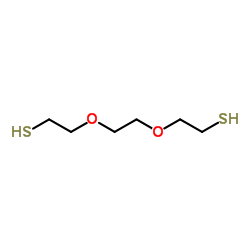Development of peptide-based lineage-specific serology for chronic Chagas disease: geographical and clinical distribution of epitope recognition.
Tapan Bhattacharyya, Andrew K Falconar, Alejandro O Luquetti, Jaime A Costales, Mario J Grijalva, Michael D Lewis, Louisa A Messenger, Trang T Tran, Juan-David Ramirez, Felipe Guhl, Hernan J Carrasco, Patricio Diosque, Lineth Garcia, Sergey V Litvinov, Michael A Miles
Index: PLoS Negl. Trop. Dis. 8(5) , e2892, (2014)
Full Text: HTML
Abstract
Chagas disease, caused by infection with the protozoan Trypanosoma cruzi, remains a serious public health issue in Latin America. Genetically diverse, the species is sub-divided into six lineages, known as TcI-TcVI, which have disparate geographical and ecological distributions. TcII, TcV, and TcVI are associated with severe human disease in the Southern Cone countries, whereas TcI is associated with cardiomyopathy north of the Amazon. T. cruzi persists as a chronic infection, with cardiac and/or gastrointestinal symptoms developing years or decades after initial infection. Identifying an individual's history of T. cruzi lineage infection directly by genotyping of the parasite is complicated by the low parasitaemia and sequestration in the host tissues.We have applied here serology against lineage-specific epitopes of the T. cruzi surface antigen TSSA, as an indirect approach to allow identification of infecting lineage. Chagasic sera from chronic patients from a range of endemic countries were tested by ELISA against synthetic peptides representing lineage-specific TSSA epitopes bound to avidin-coated ELISA plates via a biotin labelled polyethylene glycol-glycine spacer to increase rotation and ensure each amino acid side chain could freely interact with their antibodies. 79/113 (70%) of samples from Brazil, Bolivia, and Argentina recognised the TSSA epitope common to lineages TcII/TcV/TcVI. Comparison with clinical information showed that a higher proportion of Brazilian TSSApep-II/V/VI responders had ECG abnormalities than non-responders (38% vs 17%; p<0.0001). Among northern chagasic sera 4/20 (20%) from Ecuador reacted with this peptide; 1/12 Venezuelan and 1/34 Colombian samples reacted with TSSApep-IV. In addition, a proposed TcI-specific epitope, described elsewhere, was demonstrated here to be highly conserved across lineages and therefore not applicable to lineage-specific serology.These results demonstrate the considerable potential for synthetic peptide serology to investigate the infection history of individuals, geographical and clinical associations of T. cruzi lineages.
Related Compounds
| Structure | Name/CAS No. | Molecular Formula | Articles |
|---|---|---|---|
 |
3,6-DIOXA-1,8-OCTANEDITHIOL
CAS:14970-87-7 |
C6H14O2S2 |
|
The influence of linker length on the properties of cathepsi...
2014-02-10 [Biomaterials 35(22) , 5760-70, (2014)] |
|
Dual-targeted polyplexes based on sequence-defined peptide-P...
2015-02-01 [J. Pharm. Sci. 104(2) , 464-75, (2015)] |
|
Development and in vitro assessment of enzymatically-respons...
2014-12-01 [Biomaterials 35(36) , 9719-30, (2014)] |
|
The use of DODT as a non-malodorous scavenger in Fmoc-based ...
2002-10-01 [Protein Pept. Lett. 9(5) , 379-85, (2002)] |
|
Functional mapping of the interaction between TDP-43 and hnR...
2009-07-01 [Nucleic Acids Res. 12th ed., 37 , 4116-4126, (2009)] |